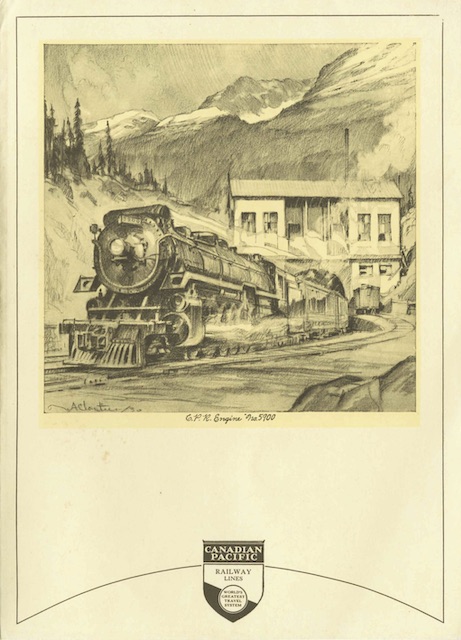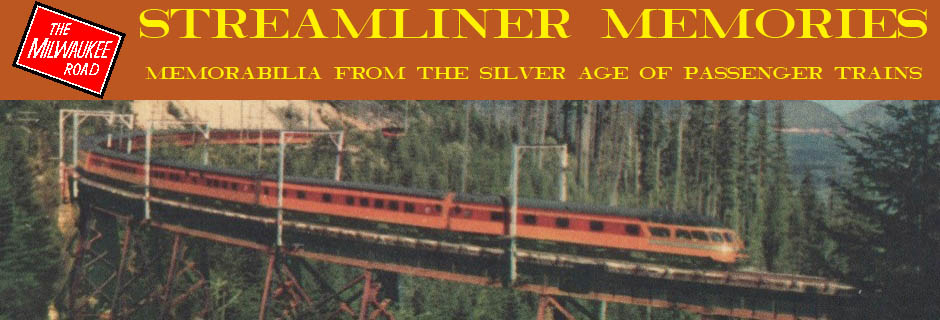This menu features the first of 36 2-10-4 locomotives built for the Canadian Pacific. The Santa Fe Railway, which pioneered this wheel arrangement, called them Texas locomotives, but Canadian Pacific called them Selkirks.
 Click image to download a 796-KB PDF of this menu.
Click image to download a 796-KB PDF of this menu.
While the Santa Fe and other U.S. railroads used 2-10-4s mainly for freight, Canadian Pacific used them to haul both freight and passenger trains across the Rocky Mountains. The cover drawing shows the locomotive emerging from the west portal of the Connaught Tunnel, which was bored through the locomotive’s namesake Selkirk Mountains. This scene wouldn’t be likely today as CP opened a second tunnel for westbound traffic in 1989.
Canadian Pacific bragged that the Selkirks were the largest and most powerful engines in the British Empire, but they were dwarfed by many U.S. locomotives. Santa Fe’s first Texas locomotive, built in 1919, produced 75,771 pounds of tractive effort, and Canadian Pacific’s Selkirks, first built in 1929, were similar at 77,204 pounds. However, Santa Fe ordered one in 1930 with a higher boiler pressure producing 113,000 pounds, and the others built for it by Baldwin were in the same range.
This unpriced breakfast menu was used for a tour group and is dated July 29, 1930. It offered cod, chopped chicken and green peppers with poached egg, or eggs and ham or bacon.
